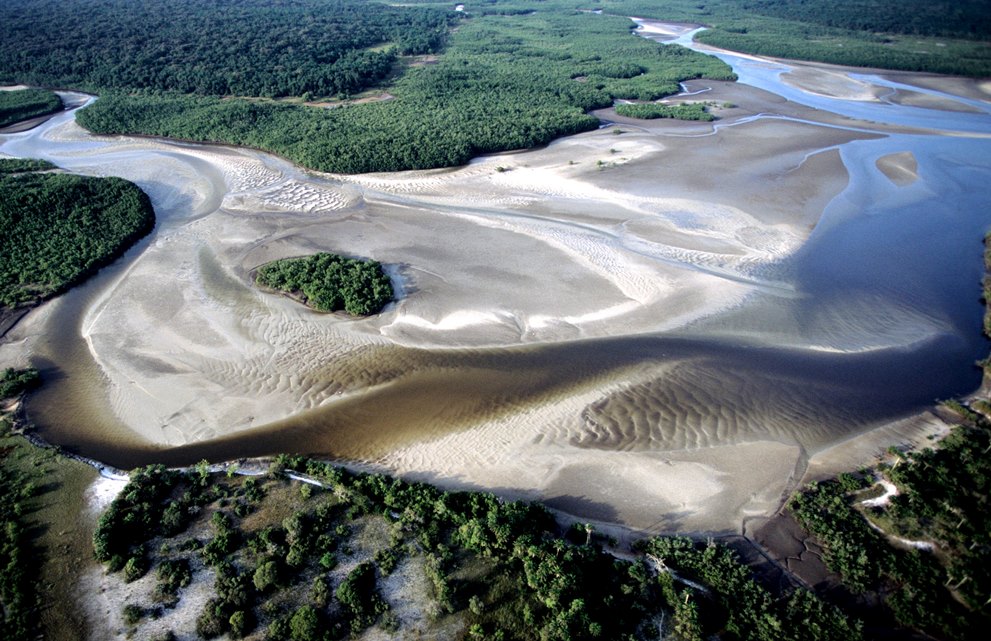|
Rasmussen Lowlands
The Rasmussen Lowlands is a 3,000 km2 coastal plain complex of wetlands in the Kitikmeot Region, Nunavut, Canada. It was designated a Ramsar wetland of international importance by the Ramsar Convention on May 24, 1982. It is also classified as an Important Bird Area. The poorly drained area consists of flat lowlands overlain by marine silts and sand, with numerous tundra ponds throughout. Shorebirds numbering up to 500,000 individuals nest in the ponds and surrounding areas. The vulnerable peregrine falcon nests in the adjacent escarpment An escarpment is a steep slope or long cliff that forms as a result of faulting or erosion and separates two relatively level areas having different elevations. Due to the similarity, the term '' scarp'' may mistakenly be incorrectly used inte ..., with nearly 6% (80 pairs) of the national population observed here in 1995. References Ramsar sites in Kitikmeot Region Geography of Kitikmeot Region Wetlands of Kitikmeot Region ... [...More Info...] [...Related Items...] OR: [Wikipedia] [Google] [Baidu] |
Ramsar Convention
The Ramsar Convention on Wetlands of International Importance Especially as Waterfowl Habitat is an international treaty for the conservation and sustainable use of Ramsar site, Ramsar sites (wetlands). It is also known as the Convention on Wetlands. It is named after the city of Ramsar, Mazandaran, Ramsar in Iran, where the convention was signed in 1971. Every three years, representatives of the contracting parties meet as the Ramsar Convention#Conference of the Contracting Parties, Conference of the Contracting Parties (COP), the policy-making organ of the wetland conservation, convention which adopts decisions (site designations, resolutions and recommendations) to administer the work of the convention and improve the way in which the parties are able to implement its objectives. In 2022, COP15 was held in Montreal, Canada. List of wetlands of international importance The list of wetlands of international importance included 2,531 Ramsar site, Ramsar sites in Februa ... [...More Info...] [...Related Items...] OR: [Wikipedia] [Google] [Baidu] |
Sand
Sand is a granular material composed of finely divided mineral particles. Sand has various compositions but is usually defined by its grain size. Sand grains are smaller than gravel and coarser than silt. Sand can also refer to a textural class of soil or soil type; i.e., a soil containing more than 85 percent sand-sized particles by mass. The composition of sand varies, depending on the local rock sources and conditions, but the most common constituent of sand in inland continental settings and non-tropical coastal settings is silica (silicon dioxide, or SiO2), usually in the form of quartz. Calcium carbonate is the second most common type of sand. One such example of this is aragonite, which has been created over the past 500million years by various forms of life, such as coral and shellfish. It is the primary form of sand apparent in areas where reefs have dominated the ecosystem for millions of years, as in the Caribbean. Somewhat more rarely, sand may be composed ... [...More Info...] [...Related Items...] OR: [Wikipedia] [Google] [Baidu] |
Important Bird Areas Of Kitikmeot Region
Importance is a property of entities that matter or make a difference. For example, World War II was an important event and Albert Einstein was an important person because of how they affected the world. There are disagreements in the academic literature about what type of difference is required. According to the causal impact view, something is important if it has a big causal impact on the world. This view is rejected by various theorists, who insist that an additional aspect is required: that the impact in question makes a value difference. This is often understood in terms of how the important thing affects the well-being of people. So in this view, World War II was important, not just because it brought about many wide-ranging changes but because these changes had severe negative impacts on the well-being of the people involved. The difference in question is usually understood counterfactually as the contrast between how the world is and how the world would have been withou ... [...More Info...] [...Related Items...] OR: [Wikipedia] [Google] [Baidu] |
Wetlands Of Kitikmeot Region
A wetland is a distinct semi-aquatic ecosystem whose groundcovers are flooded or saturated in water, either permanently, for years or decades, or only seasonally. Flooding results in oxygen-poor (anoxic) processes taking place, especially in the soils. Wetlands form a transitional zone between waterbodies and dry lands, and are different from other terrestrial or aquatic ecosystems due to their vegetation's roots having adapted to oxygen-poor waterlogged soils. They are considered among the most biologically diverse of all ecosystems, serving as habitats to a wide range of aquatic and semi-aquatic plants and animals, with often improved water quality due to plant removal of excess nutrients such as nitrates and phosphorus. Wetlands exist on every continent, except Antarctica. The water in wetlands is either freshwater, brackish or saltwater. The main types of wetland are defined based on the dominant plants and the source of the water. For example, ''marshes'' are wetlands domi ... [...More Info...] [...Related Items...] OR: [Wikipedia] [Google] [Baidu] |


